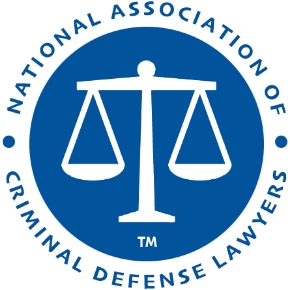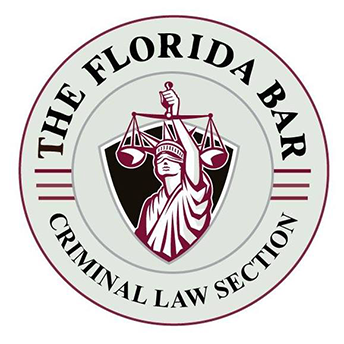Motion for COVID-19 Compassionate Release
For individuals serving a sentence in federal prison, their criminal defense attorney can file a motion for their immediate compassionate release under 18 U.S.C. § 3582(c)(1)(A), as amended by the First Step Act of 2018 (“First Step Act”), Pub. L. No. 115-391, 132 Stat. 5194.
The motion argues that the continued confinement in the wake of the COVID-19 pandemic and in light of the defendant’s medical vulnerabilities poses a serious threat to the defendant’s health and safety. Ideally, your attorney will provide the motion to the Assistant United States Attorney (AUSA) and convince them not to oppose the motion at the scheduled motion hearing.
These motions often hinge on whether the defendant can provide medical evidence that he is at high risk with respect to COVID-19 and that he has served a substantial portion of his sentence already.
Attorney for Motions for Compassion Release in Tampa, FL
If you enter a plea to a crime at the federal courthouse in the Middle District of Florida, Tampa Division, and the court sentenced to a term of months in prison or a term of prison followed by supervised release, then contact an attorney at Sammis Law Firm to discuss hiring us to file and litigate a motion for immediate compassionate release under 18 U.S.C. § 3582(c)(1)(A).
Our federal criminal defense attorneys in Tampa, FL, can help you gather medical evidence or the opinion of a physician to assist the court in concluding that you falls within the category of having a medical condition that makes you particularly vulnerable. In other words, the court needs medical evidence upon which to conclude that COVID-19 poses “increased lethality” to you.
Your attorney also needs to show specific problems in the prison in which you are being held.
An experienced federal criminal defense attorney in Tampa, FL, can help you show the court all of the extraordinary and compelling reason under 18 U.S.C. § 3582(c)(1)(A) to warrant your immediate compassionate release from BOP custody.
Contact us to discuss your case. Call 813-250-0500.
Requirements for the Motion for Compassionate Release
If you were incarcerated under the authority of the Federal Bureau of Prisons (“BOP”) at a prison in Florida, then you can file a motion will list the following:
- The charges filed against you;
- Whether you went to trial or entered a plea to certain charges;
- The sentence imposed by the court;
- Your anticipated release date release according to the BOP website;
- Medical evidence that you are at high risk with respect to COVID-19 and that he has served a substantial portion of his sentence already.
Until Congress passed the First Step Act, only the BOP could bring a motion for compassionate release. After the passage of the First Step Act, Section 1B1.13 “is at least partly anachronistic because it has not yet been updated to reflect the new procedural innovations of the First Step Act.” United States v. Ebbers, 2020 U.S. Dist. LEXIS 3746, 2020 WL 91399, at *4 (S.D.N.Y. Jan. 8, 2020).
“[It] is, nonetheless, helpful in defining a vague standard” because “[t]he First Step Act did not revise the substantive criteria for compassionate release.” Id.
When Can the Court Grant the Motion for Compassionate Release?
Once the sentence has been imposed, the court is not permitted to modify a term of imprisonment unless it is authorized by a specific statute. One statutory exception that allows the court to modify a sentence is found in Section 3582(c)(1)(A), which is often referred to as “compassionate release.”
18 U.S.C. § 3582(c)(1)(A)(i) provides as follows:
[a sentencing] court, . . . upon motion of the defendant after the defendant has fully exhausted all administrative rights to appeal a failure of the Bureau of Prisons to bring a motion on the defendant’s behalf or the lapse of 30 days from the receipt of such a request by the warden of the defendant’s facility, whichever is earlier, may reduce the term of imprisonment (and may impose a term of probation or supervised release with or without conditions that does not exceed the unserved portion of the original term of imprisonment), after considering the factors set forth in section 3553(a) to the extent that they are applicable, . . . if it finds that extraordinary and compelling reasons warrant such a reduction . . . and that such a reduction is consistent with applicable policy statements issued by the Sentencing Commission.
Id.
Guidelines section 1B1.13 of the policy statement provides as follows:
Upon motion of the Director of the Bureau of Prisons under 18 U.S.C. § 3582(c)(1)(A), the court may reduce a term of imprisonment (and may impose a term of supervised release with or without conditions that does not exceed the unserved portion of the original term of imprisonment) if, after considering the factors set forth in 18 U.S.C. § 3553(a), to the extent that they are applicable, the court determines that
(1) (A) Extraordinary and compelling reasons warrant the reduction; or
(B) The defendant (i) is at least 70 years old; and (ii) has served at least 30 years in prison pursuant to a sentence imposed under 18 U.S.C. § 3559(c) for the offense or offenses for which the defendant is imprisoned;
(2) The defendant is not a danger to the safety of any other person or to the community, as provided in 18 U.S.C. § 3142(g); and
(3) The reduction is consistent with this policy statement.
Id.
In these types of motions, the defendant has the burden to show he is entitled to a sentence reduction. For this reason, in order to obtain relief under section 3582(c)(1)(A)(i), the defendant must show the following:
- the defendant has met the exhaustion requirement or the requirement is otherwise excused;
- “extraordinary and compelling reasons” warrant a reduction of his sentence;
- the defendant is not a danger to others or the community; and
- a reduction is consistent with the factors set forth in section 3553(a).
Requirements of the Exhaustion Requirement
As a preliminary matter, the court must first consider whether the defendant has met section 3582(c)(1)(A)’s exhaustion requirement.
To meet the requirement, the defendant must show one of the following:
- that he has “fully exhausted all administrative rights to appeal a failure of the [BOP] to bring a motion on [his] behalf;” or
- that 30 days have lapsed since “the receipt of such a request by the warden of the defendant’s facility.”
See 18 U.S.C. § 3582(c)(1)(A).
In order to meet this requirement, your criminal defense attorney should sent a letter to the warden at the federal prison where you are being held to request that you be screened for release to home detention.
In these cases the AUSA might contact a senior attorney at the prison to see whether the request for compassionate release has been received.
In United States v. Bess, No. 16-CR-156, 2020 U.S. Dist. LEXIS 71056, 2020 WL1940809, at *6 (W.D.N.Y. Apr. 22, 2020), the court determined that section 3582(c)(1)(A)’s exhaustion requirement is nonjurisdictional. In other words, section 3582(c)(1)(A) is a claim-processing rule that is subject to both forfeiture and waiver.
In Bess, the court ultimately concluded that a defendant’s failure to exhaust may be excused as a matter of judicial discretion. Id.
Given the unprecedented health crisis the country is now facing, the question is whether applying equitable exceptions to section 3582(c)(1)(A) would be incompatible with Congressional intent. 2020 U.S. Dist. LEXIS 71056, [WL] at *7 (internal citations omitted). As to that questions, the court have found that Congress cannot have intended the 30-day waiting period to strictly apply in these highly unusual situation.
Instead, it is clear that Congress designed the statute to enhance public safety and make changes to the Bureau of Prisons’ policies and procedures to ensure prisoner and guard safety and security.'” Scparta, 2020 U.S. Dist. LEXIS 68935, 2020 WL 1910481, at *7 (quoting H.R. Rep. No. 115-699, at 22 (2018)).
The purpose of the statue is not served by keeping a vulnerable defendant incarcerated in precarious conditions that pose risks to not only his own health and safety, but also to the health and safety of the prison staff and the communities to which they return each day.
Id.
For this reason, section 3582(c)(1)(A)’s exhaustion requirement is subject to equitable exceptions, including judicial excusal.
Showing Extraordinary and Compelling Reasons
Under section 3582(c)(1)(A), the defendant must demonstrate that extraordinary and compelling reasons support his release. In fact, Congress delegated to the United States Sentencing Commission the task of determine what “should be considered extraordinary and compelling reasons for sentence reduction.” See 28 U.S.C. § 994(t).
In the comment to U.S.S.G. § 1B1.13, four examples of such circumstances were listed including:
- medical condition of the defendant
- age of the defendant
- family circumstances
- other reasons
U.S.S.G. § 1B1.13 cmt. n.1.
Requirements for Showing the Medical-Conditions Circumstances
The medical-condition circumstance applies when:
(i) The defendant is suffering from a terminal illness (i.e., a serious and advanced illness with an end of life trajectory). A specific prognosis of life expectancy (i.e., a probability of death within a specific time period) is not required. Examples include metastatic solid-tumor cancer, amyotrophic lateral sclerosis (ALS), end-stage organ disease and advanced dementia[; or]
(ii) The defendant is—
(I) suffering from a serious physical or medical condition,
(II) suffering from a serious functional or cognitive impairment, or
(III) experiencing deteriorating physical or mental health because of the aging process, that substantially diminishes the ability of the defendant to provide self-care within the environment of a correctional facility and from which he or she is not expected to recover.
U.S.S.G. § 1B1.13 cmt. n.1(A).
The other-reasons circumstance applies when “there exists in the defendant’s case an extraordinary and compelling reason other than, or in combination with,” medical conditions, age, or family circumstances. Id. § 1B1.13 cmt. n.1(D).
Courts have “take[n] judicial notice that, for people of advanced age, with underlying health problems, or both, COVID-19 causes severe medical conditions and has increased lethality.” Jones v. Wolf, No. 20-CV-361, 2020 U.S. Dist. LEXIS 58368, 2020 WL 1643857, at *8 (W.D.N.Y. Apr. 2, 2020) (citations omitted).
The motion should show that a medical condition suffered by the defendant is included on this list.
Showing Conditions at the Defendant’s Prison
The court might also consider whether the conditions at the prison in which you are being held are cause for concern. For this determination, the court will look at whether the BOP has reported any confirmed inmate and confirmed staff cases of COVID-19, as well as confirmed inmate deaths.
The court might also consider whether you are being housed in an open-dorm unit and how many other people are housed in that open-dorm unit without the cubes in which the inmates are bunked are 6 feet apart from each other.
A criminal defense attorney in Tampa, FL, can help you show a sufficiently extraordinary and compelling reason for a sentence reduction under 18 U.S.C. § 3582(c)(1)(A).
The Dangerousness Consideration
The court will also consider whether the defendant is “a danger to the safety of any other person or to the community.” U.S.S.G. § 1B1.13(2). If the court concludes that you satisfy the second prong, then the court will address the dangerousness issue.
Considering Section 3553(a) Factors
Then the court must consider the factors set forth in section 3553(a). See 18 U.S.C. § 3582(c)(1)(A). Those factors include:
(1) the nature and circumstances of the offense and the history and characteristics of the defendant;
(2) the need for the sentence imposed—
(A) to reflect the seriousness of the offense, to promote respect for the law, and to provide just punishment for the offense;
(B) to afford adequate deterrence to criminal conduct;
(C) to protect the public from further crimes of the defendant; and
(D) to provide the defendant with needed educational or vocational training, medical care, or other correctional treatment in the most effective manner;
…
(4) the kinds of sentence and the sentencing range established [under the applicable Guidelines sections]
…[and]
(6) the need to avoid unwarranted sentence disparities among defendants with similar records who have been found guilty of similar conduct.
18 U.S.C. § 3553(a).
“[I]n deciding motions for compassionate release, the Court should be wary of using the motion to ‘correct’ the sentencing court’s original judgment or introduce unprincipled variance into the execution of duly-imposed sentences, while still honoring Congress’s stated intent of increasing the availability of compassionate release.” Ebbers, 2020 U.S. Dist. LEXIS 3746, 2020 WL 91399, at *7.
Therefore, “in considering the section 3553(a) factors, it should assess whether those factors outweigh the ‘extraordinary and compelling reasons’ warranting compassionate release, particularly whether compassionate release would undermine the goals of the original sentence.” Id.
Additional Resources
Compassionate Release for Coronavirus Disease – Visit the website of the Defender Services Office Training Division, Administrative Office of the United States Courts, to find examples of orders granting federal sentence reductions using SS 3582(c)(1)(A), including stacking/disparity/trial penalty concerns, orders compassionate release based in part on COVID-19. The website contains examples of emergency motions to modify sentence for compassionate release based in part on COVID-19.
BOP Annual Report to Congress re: Compassionate Release Under the First Step Act – In a publication dated February 13, 2020, the BOP provided a report to congress regarding the requirements of compassionate release under the First Step Act.
This article was last updated on Friday, May 15, 2020.














